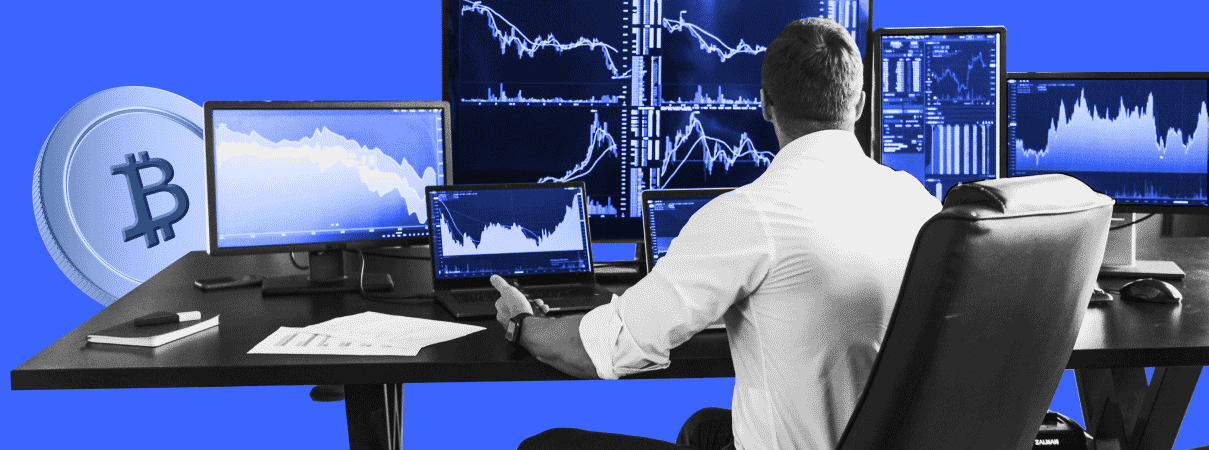In the dynamic world of finance, where every whisper from a central bank can send ripples across global markets, a recent statement from former U.S. President Donald Trump has captured significant attention. His impression regarding Federal Reserve (Fed) Chair Jerome Powell and the potential for a Fed Rate Cut has ignited discussions among investors, economists, and especially those closely watching the cryptocurrency space. What exactly did Trump say, and why does it hold such weight for the future of the economy and digital assets?
What Did Trump Say About a Potential Fed Rate Cut?
On July 24, according to a report by Walter Bloomberg on X, former U.S. President Donald Trump conveyed that he had received an impression from Federal Reserve Chair Jerome Powell that Powell might be prepared to cut interest rates. This seemingly brief statement, coming from a figure who frequently commented on Fed policy during his presidency, immediately resonated through financial circles. While not an official announcement from the Fed itself, Trump’s remarks offered a glimpse into potential monetary policy shifts, sparking speculation about the timing and magnitude of such a move.
It is important to understand the context here. The Federal Reserve, as the central bank of the United States, plays a crucial role in managing the nation’s money supply and credit conditions. Its decisions on interest rates directly influence everything from borrowing costs for consumers and businesses to the overall health of the economy. A statement, even an indirect one, from a former President about the Fed’s potential actions can therefore carry significant weight, influencing market sentiment and investor behavior.
Why Does a Fed Rate Cut Matter for the Economy?
Understanding the impact of a Fed Rate Cut requires a brief look at how interest rates function within the broader economy. The federal funds rate, which the Fed targets, is the benchmark for many other interest rates in the economy. When the Fed cuts this rate, it generally aims to stimulate economic activity. Here’s how it typically works:
- Lower Borrowing Costs: Businesses can borrow money more cheaply to invest in expansion, hiring, and innovation. Consumers might find it less expensive to take out loans for homes, cars, or other significant purchases.
- Increased Spending and Investment: With lower borrowing costs and potentially higher disposable income (due to lower loan payments), consumers and businesses are encouraged to spend and invest, boosting economic growth.
- Weakened Dollar: Lower interest rates can make the U.S. dollar less attractive to foreign investors, potentially leading to a weaker dollar. A weaker dollar can make U.S. exports more competitive globally.
- Inflationary Pressure: While stimulating growth, rate cuts can also lead to inflationary pressures if the economy overheats due to too much money circulating.
Historically, the Fed cuts rates during periods of economic slowdown or uncertainty to provide a much-needed boost. Conversely, they raise rates to combat inflation or cool down an overheated economy.
How Might a Fed Rate Cut Impact the Crypto Market?
The cryptocurrency market, while often seen as distinct from traditional finance, is not immune to macroeconomic forces. A potential Fed Rate Cut could have several profound implications for digital assets:
- Increased Liquidity and Risk Appetite: Lower interest rates typically lead to more liquidity in the financial system. When traditional investments like bonds offer lower returns, investors may seek higher yields in riskier assets, including cryptocurrencies. This increased flow of capital can drive up crypto prices.
- Devaluation of Fiat Currency: If a rate cut is perceived as a move to devalue the U.S. dollar or combat inflation through monetary expansion, some investors might turn to Bitcoin and other cryptocurrencies as a hedge against inflation or as a store of value, similar to gold.
- Boost for Decentralized Finance (DeFi): Lower traditional borrowing costs might indirectly make DeFi protocols more attractive, as users seek higher yields or more flexible financial services outside conventional banking.
- Impact on Tech Stocks and Correlated Assets: Cryptocurrencies, particularly Bitcoin, have shown some correlation with technology stocks. If rate cuts boost the broader tech sector by making future earnings more valuable, this positive sentiment could spill over into the crypto market.
During periods of quantitative easing (QE), where the Fed expanded its balance sheet and kept rates low, the crypto market often experienced significant bull runs. While a single rate cut is not QE, it signals a potentially looser monetary policy environment, which has historically been bullish for risk assets.
What Are the Challenges and Risks Associated with Rate Cuts?
While the prospect of a Fed Rate Cut often brings optimism, it’s crucial to acknowledge the potential challenges and risks. No monetary policy decision is without its complexities:
- Inflationary Pressures: If the rate cut is not justified by underlying economic weakness and instead leads to excessive liquidity, it could reignite inflation, eroding purchasing power and potentially leading to a less stable economic environment.
- Asset Bubbles: Sustained low interest rates can sometimes contribute to the formation of asset bubbles, where asset prices become detached from their fundamental value. This could apply to real estate, stocks, or even cryptocurrencies.
- Market Volatility: The market’s reaction to a rate cut can be unpredictable. If the cut is less than expected, or if accompanying statements from the Fed are hawkish, it could lead to disappointment and increased volatility.
- Perception of Economic Weakness: While intended to stimulate, a rate cut can also be interpreted by some as an admission that the economy is weaker than previously thought, potentially leading to a lack of confidence.
Investors should always consider the broader economic context and the Fed’s rationale behind any decision, rather than simply reacting to headlines.
Navigating the Waters: Actionable Insights for Investors
In light of potential shifts in monetary policy, what actionable steps can investors take, especially those interested in the crypto market?
1. Stay Informed and Monitor Fed Announcements: The Federal Open Market Committee (FOMC) meetings are key events. Pay close attention to the Fed’s official statements, press conferences, and economic projections. These provide direct insight into the central bank’s thinking, far more reliable than impressions from third parties.
2. Understand the Macroeconomic Landscape: A Fed Rate Cut is part of a larger economic picture. Consider inflation data, employment figures, GDP growth, and geopolitical events. These factors collectively influence market sentiment and asset performance.
3. Diversify Your Portfolio: While a rate cut might favor risk assets like crypto, diversification remains a cornerstone of sound investment strategy. Spreading investments across different asset classes can help mitigate risks during volatile periods.
4. Define Your Risk Tolerance: Crypto markets are inherently volatile. Before making investment decisions based on potential rate cuts, assess your personal risk tolerance and investment horizon. Are you comfortable with short-term price swings for potential long-term gains?
5. Consider Long-Term Fundamentals: Instead of solely reacting to news, focus on the fundamental value and utility of the cryptocurrencies you invest in. Projects with strong technology, clear use cases, and active development teams often perform better in the long run, regardless of short-term macroeconomic fluctuations.
The interplay between political commentary, central bank policy, and market dynamics is complex. While Donald Trump’s statement offers an intriguing perspective, the Federal Reserve’s official actions will ultimately dictate the path forward for interest rates and, by extension, influence the broader financial landscape, including the vibrant world of cryptocurrencies.
Conclusion
The former U.S. President Donald Trump’s impression that Federal Reserve Chair Jerome Powell might be ready for a Fed Rate Cut has certainly added a layer of intrigue to the ongoing economic narrative. Such a move, if it materializes, could inject significant liquidity into the financial system, potentially bolstering the appeal of risk-on assets like cryptocurrencies. However, it also brings considerations around inflation and market stability.
As investors, the key lies in discernment and proactive research. While political insights can offer hints, the ultimate drivers of market movements are the Federal Reserve’s official policy decisions, economic data, and the inherent fundamentals of the assets themselves. Staying informed and adopting a balanced investment approach will be crucial for navigating the evolving landscape shaped by central bank policies and global economic shifts.
Frequently Asked Questions (FAQs)
Q1: What is the Federal Reserve’s primary goal when setting interest rates?
A1: The Federal Reserve’s primary goals, mandated by Congress, are to promote maximum employment, stable prices (low inflation), and moderate long-term interest rates. Interest rate adjustments are a key tool to achieve these objectives.
Q2: How quickly would a Fed Rate Cut impact the economy and crypto markets?
A2: The impact of a Fed Rate Cut can be felt relatively quickly in financial markets, often within hours or days as traders react. For the broader economy, the effects typically unfold over several months as lower borrowing costs trickle down to businesses and consumers.
Q3: Does a Fed Rate Cut always lead to a crypto bull run?
A3: Not necessarily. While lower interest rates and increased liquidity can be bullish for risk assets like crypto, many other factors influence crypto prices, including regulatory developments, technological advancements, market sentiment, and global events. It’s a contributing factor, not a sole determinant.
Q4: Who is Jerome Powell, and what is his role?
A4: Jerome Powell is the current Chair of the Board of Governors of the Federal Reserve System. In this role, he leads the central bank and is responsible for implementing monetary policy decisions, overseeing the banking system, and maintaining financial stability.
Q5: How can I track official Fed announcements about interest rates?
A5: You can track official Federal Reserve announcements by visiting the official Federal Reserve website . They publish press releases, meeting minutes, and economic projections regularly.
Did you find this article insightful? Share it with your friends, family, and fellow investors on social media to spread awareness about the potential impact of a Fed Rate Cut on our economy and the exciting world of cryptocurrencies!
To learn more about the latest crypto market trends, explore our article on key developments shaping Bitcoin’s price action.



